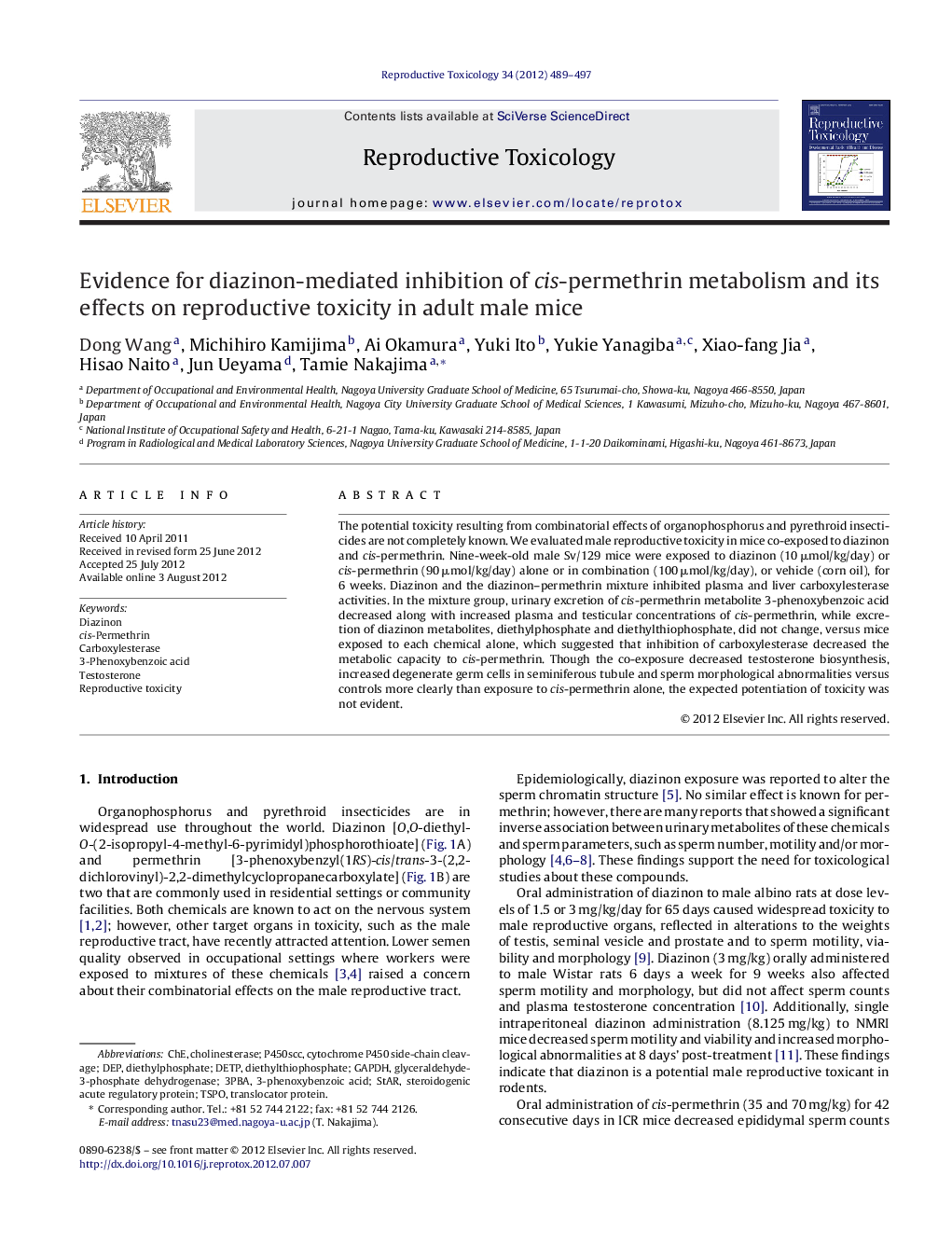| Article ID | Journal | Published Year | Pages | File Type |
|---|---|---|---|---|
| 2593862 | Reproductive Toxicology | 2012 | 9 Pages |
The potential toxicity resulting from combinatorial effects of organophosphorus and pyrethroid insecticides are not completely known. We evaluated male reproductive toxicity in mice co-exposed to diazinon and cis-permethrin. Nine-week-old male Sv/129 mice were exposed to diazinon (10 μmol/kg/day) or cis-permethrin (90 μmol/kg/day) alone or in combination (100 μmol/kg/day), or vehicle (corn oil), for 6 weeks. Diazinon and the diazinon–permethrin mixture inhibited plasma and liver carboxylesterase activities. In the mixture group, urinary excretion of cis-permethrin metabolite 3-phenoxybenzoic acid decreased along with increased plasma and testicular concentrations of cis-permethrin, while excretion of diazinon metabolites, diethylphosphate and diethylthiophosphate, did not change, versus mice exposed to each chemical alone, which suggested that inhibition of carboxylesterase decreased the metabolic capacity to cis-permethrin. Though the co-exposure decreased testosterone biosynthesis, increased degenerate germ cells in seminiferous tubule and sperm morphological abnormalities versus controls more clearly than exposure to cis-permethrin alone, the expected potentiation of toxicity was not evident.
► Diazinon suppressed co-exposed cis-permethrin metabolism by inhibiting carboxylesterase activity. ► Thereby, diazinon suppressed urinary metabolite of co-exposed cis-permethrin. ► As a result, co-exposed diazinon accentuated plasma testosterone suppression by cis-permethrin.
